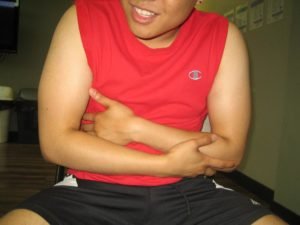A pulled abdominal muscle or tear involves injury to the muscles fibers in the abdomen. It is important to note that this injury often occurs when the abdominal muscles are overly stretched during twisting or lifting movements which eventually leads to the muscle tissue being completely or partially torn.
Always bear in mind that the abdominal muscles are highly vital for the core anatomy and they are utilized for different bodily movements ranging from walking and urinating. The significance of the abdominal muscles in daily activities makes this form of muscle tear distressing. It is still best to consult a doctor if the individual continues to suffer from severe pain.
What are the common causes?

The common cause for a pulled abdominal muscle is engaging in strenuous exercises without proper preparation. Putting too much weight when using an ab crunch machine without warming up before exercise can increase the risk for a pulled abdominal muscle. The sharp twisting motion of the body or using an incorrect technique while performing crunches or sit-ups can also lead to a pulled abdominal muscle.
When does it occur?
The individual can experience pulled abdominal muscle during exercise but only recognize the pain after completing a workout. Engaging in high-intensity exercise can trigger the release of adrenalin in the body which helps momentarily dull the pain. Once the adrenaline wears off, pain will manifest and the individual will assume that the injury occurred after exercising.
Always remember that intensive workouts should be followed by 24-48 hours of rest. Strenuous exercise without enough time for muscle recovery can increase the risk for pulled abdominal muscles when heavy objects are lifted at home.
Recognizing a pulled abdominal muscle
A pulled abdominal muscle can be painful when touched and there is bruising and swelling. The other symptoms that can manifest include muscle spasms, stiffness and pain during flexion or when the abdominal muscles are used. A pulled abdominal muscle might be difficult to distinguish from other injuries or conditions such as appendicitis or hernia. With this in mind, it is vital to consult a doctor first when the individual experiences severe pain or significant swelling. You can learn more on the management of this condition by enrolling in a first aid course today.
Management of a pulled abdominal muscle
The abdominal muscles are difficult to rest since they are used for vital movements such as walking or standing up. While the individual is at rest, an ice pack can be applied to the muscle tear for about 20 minutes at 3-4 times in a day. Do not apply ice directly on the skin and make sure that it is wrapped in a clean towel or cloth. Once the muscle injury has healed, the individual can resume exercise with proper warm-up and a heat pack applied on the abdominal muscles.
